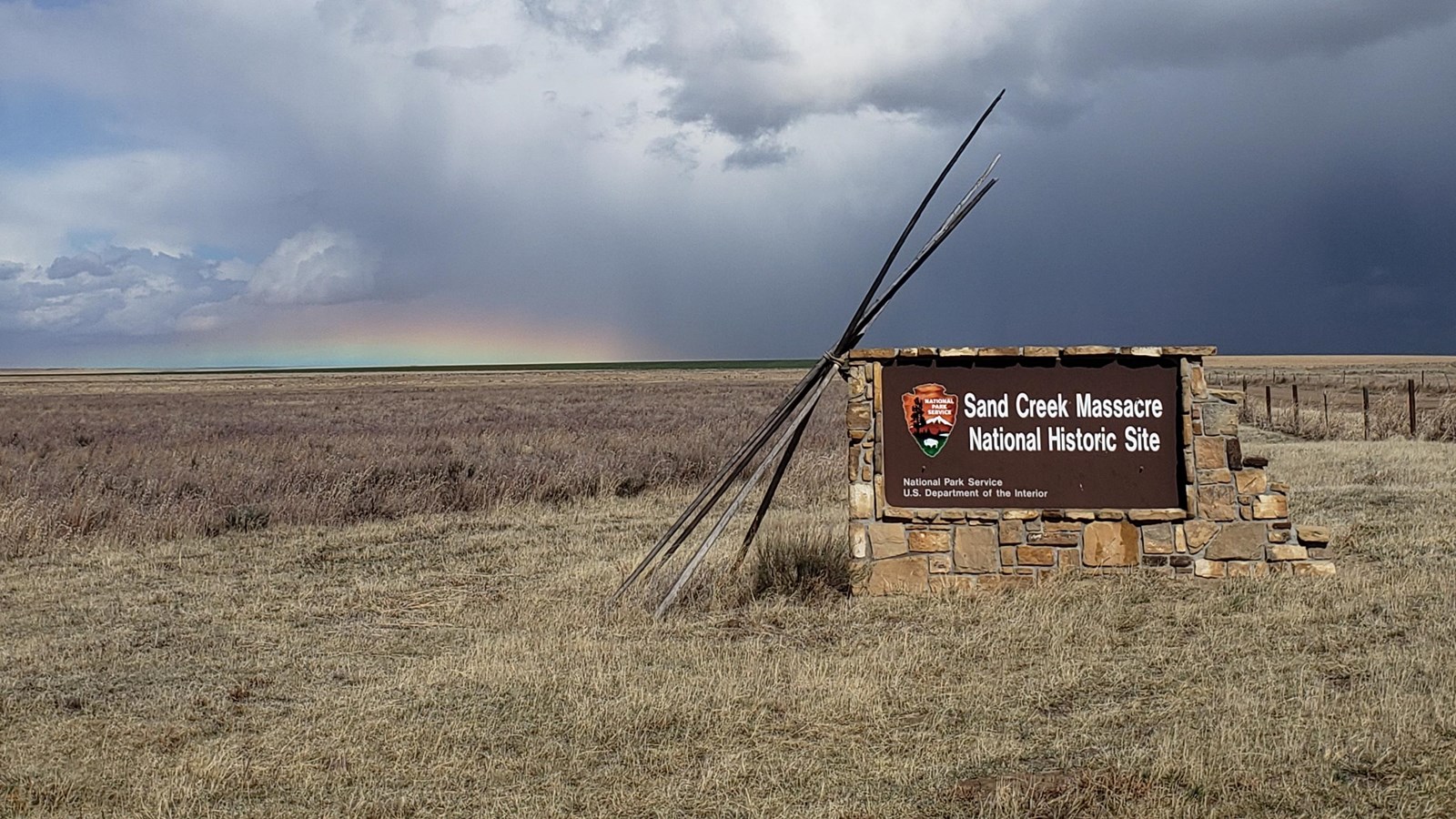Last updated: February 16, 2025
Place
Sand Creek Massacre National Historic Site

NPS/Teri Jobe
Accessible Sites, Benches/Seating, Gifts/Souvenirs/Books, Historical/Interpretive Information/Exhibits, Information - Ranger/Staff Member Present, Junior Ranger Booklet Available, Parking - Auto, Parking - Bus/RV, Picnic Table, Restroom, Toilet - Vault/Composting, Trailhead, Water - Bottle-Filling Station
Sand Creek Massacre National Historic Site commemorates the November 29, 1864, attack on a village of about 700 Southern Cheyenne and Arapaho people along Sand Creek (Big Sandy Creek and Sand Creek refer to the same drainage and are synonymous terms) in southeastern Colorado Territory, about 170 miles southeast of Denver. At dawn, approximately 675 soldiers of the 1st and 3rd Regiments, Colorado Volunteer (U.S.) Cavalry, killed more than 230 Cheyenne and Arapaho over the course of seven hours.
Colonel John M. Chivington, a Methodist minister, led an unprovoked surprise attack on a peaceful camp using small arms and howitzer fire to kill as many Cheyenne and Arapaho as possible. While many managed to escape the initial onslaught, others, particularly noncombatant women, children, and the elderly, fled into and up the bottom of the dry creek channel. The soldiers followed, shooting them as they struggled through the sandy ground. At a point several hundred yards above the village, the fleeing people frantically dug pits and trenches along either side of the streambed in a desperate attempt to escape the soldiers’ bullets. Some tried to fight back with whatever weapons they had managed to retrieve from camp. At several places along Sand Creek, the soldiers shot from opposite banks in a cross-fire. Finally, the howitzers were brought forward to drive the Indians from their makeshift defenses.
Among the dead were 13 Cheyenne peace chiefs and one Arapaho chief, whose deaths severely disrupted the tribes’ traditional forms of governance for generations. During that afternoon and the following day, soldiers committed atrocities on the dead, including taking human body parts as trophies. They departed the massacre site on December 1, 1864, taking 600 captured horses with them
For more than 150 years, the Sand Creek Massacre has maintained its significance as one of the most emotionally charged and controversial events in U.S. history; a tragedy reflective of its time and place. The background of the Sand Creek Massacre lay in a whirlwind of events and issues triggered by the ongoing Civil War in the East and West, overreactions to the 1862–1863 Dakota uprising in Minnesota, the constant undercurrent of threatened Confederate incursions, the political and financial ambitions of Territorial Governor John Evans, and the substantial involvement of the Methodist Church in politics and the military in Colorado Territory. Perhaps most importantly, the causes of the Sand Creek Massacre lay in the irresistible momentum of Manifest Destiny—the U.S. belief in its right to establish dominance over the lands between the Mississippi River and the Pacific coast.
Congress authorized Sand Creek Massacre as a unit of the National Park System in 2000, and the site was dedicated and formally opened to the public on April 27, 2007. The site is on the grassland plains of southeast Colorado and remains largely undeveloped, but offers an orientation area, overlook, trail system, and visitor contact station with a park store. Visitors can access the national historic site via a county road off Colorado State Highway 96. The Monument Hill area includes an overlook above Big Sandy Creek, a shade structure, and the Repatriation Area. A trail continues along the bluff beyond the Monument Hill overlook, overlooking the creek bed and following the course of the massacre as tribal members fled along the creek with soldiers in pursuit. A number of interpretive wayside exhibits provide visitors with information about the massacre. Visitor information is also provided by a ranger-led interpretive program, a park brochure, site bulletins, and other printed material.
